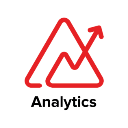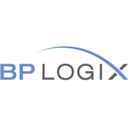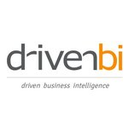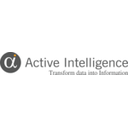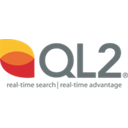Business Intelligence software: purchase guide
What is business intelligence software?
Definition
Business intelligence software helps companies to focus on their business operations while following the digital transformation process. The term "business intelligence" encompasses the process of analyzing and transforming unstructured business data. This data can come from any internal source and is transformed into a set of key indicators to be reported and visualized in graphs, tables that display valuable information. By using business intelligence, the information is then reprocessed and used to support strategic decision-making for the company. This software often creates automatic reports and dashboards that can be deployed for end-users, as well as non-technical user interfaces. Business intelligence software makes it easier for business users to visualize data so that they can reduce and split data on their own or make reports. Business intelligence software can also include advanced data mining, predictive analysis, and Big Data tools. Although this type of project is usually conducted by professional analysts.
How does it work?
These software programs are designed to collect information on a specific theme. Using information systems, they detect all sources containing the keywords inserted in the search engine and collect all data likely to interest the user. Thanks to the powerful reporting tools from which the solutions benefit, they will then be transformed into reports in the form of dashboards or graphs to facilitate reading and help in decision-making.
Business intelligence software is equipped with cloud computing technology, allowing the user to freely access his various files. To do this, it only needs a terminal connected to the Internet: PC, smartphone, tablet, etc.
What are the main features of SaaS business intelligence software?
The functionalities of this type of software differ according to its version:
Data mix
A business intelligence tool is designed to collect various data from all sources. It then combines the data to create reports on a specific theme and obtain all the information about the company.
Editing dashboards
The BI generally includes data visualization software that allows performance indicators to be formatted. The raw data collected are transformed into dashboards to facilitate the reading of information. The latter can be modified, depending on their final use. Various graphics and visualizations are also created by the software. By the principle of drag and drop, it is possible to design interactive reports. The solutions also often provide access to hundreds of pre-configurations that can be optimized for any type of format later on. This makes the business intelligence solution an essential decision-making tool.
Solution proposal
Once the modules responsible for the graphs have finished their work, other tools integrated into the software will propose solutions based on the data analysis.
Who uses business intelligence software?
These data analysis tools are intended for all companies looking for an effective solution to ensure the smooth running of their business. They are also designed for small traders, self-employed entrepreneurs and anyone who wants to ensure the success of their business. This kind of free decision support software is suitable for all types of sectors.
Why use business intelligence software in companies?
Advantages
- One of the advantages of using business intelligence software is that it makes it easier to make decisions. Thanks to such a tool, data processing is faster, which has a direct impact on the implementation of an efficient strategy.
- It allows the different structures to identify current market trends and adopt action plans along these lines, if necessary.
- It allows, thanks to the company's Data Visualization and Data Management tools, a real acceleration and improvement of decision-making.
- With this type of application, it is not necessary to hire a BI consultant. Modules support the creation of data models (point cloud, histogram, statistical curve, etc.) that are easy to analyze. Above all, it is an ideal solution for small structures.
- The user will be able to manage his business with confidence thanks to automated information systems.
- The analyst will be able to browse the files anywhere and at any time since the data is stored on the Cloud.
Disadvantages
- Some free software is limited in terms of functionality.
How to choose an online business intelligence software?
The choice of business intelligence software requires certain criteria. Here are some important points to keep in mind:
- The ability to collect data: accessing different databases is the whole point of using this type of software. It is therefore not interesting to opt for tools that do not have this ability. The more information collected, the more information the user will have to set up an effective plan.
- The possibility to export the data: it must be exportable for the user to have an electronic or paper document. It is also essential that these data can be compatible with Microsoft Office, more particularly with Excel.
- Data security: As this is online software, it is essential to ensure that data is well protected. The user must ensure with the supplier that only those responsible for accessing the information are authorized to use it.
- The cost of the software: there are applications available for free and others for a fee. The ideal is to choose the model that best meets the requirements of the company but also its budget.
The best free and open source business intelligence software
- JasperSoft
- Pentaho
- Knowage
- BIRT Project
The most popular professional business intelligence software
For self-entrepreneurs, freelancers and self-employed people
- Hyperion Workspace
- QlikView
- Microstrategy
For start up
- ActivePivot
- JasperSoft
- Cognos
For SMEs
For VSEs
- Webfocus
- Power BI
- Active Intelligence
To ensure business management, it is advisable to use business intelligence software. It is an essential application to automate data processing and improve analysis time. This type of tool is simply a decision-making aid for any organization.

